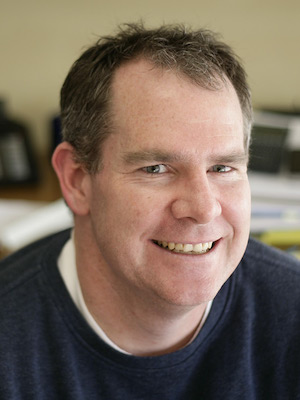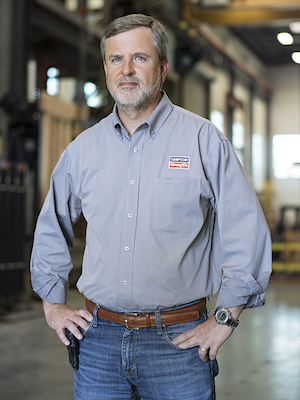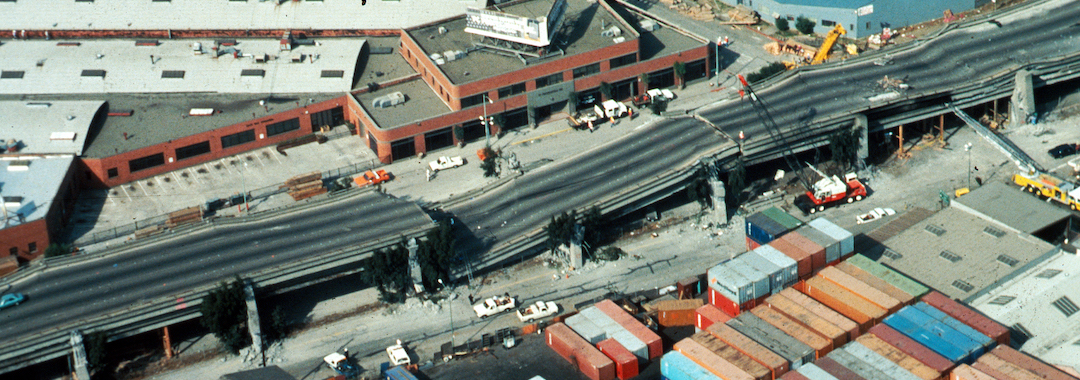Every year on October 17, we take a moment to reflect on the 1989 Loma Prieta earthquake. The 6.9-magnitude earthquake was one of the most powerful and costly quakes to shake the San Francisco Bay area since the 7.9-magnitude earthquake of 1906. The quake caused an estimated $6 billion in damage and, tragically, resulted in 63 deaths and 3,757 injuries.
Many of those casualties were due to failing infrastructure when sections of the Nimitz Freeway collapsed.
Simpson Strong-Tie was founded in Oakland, California — practically in the heart of the Bay Area. Earthquakes were never far from the minds of our founders. It’s why even before Loma Prieta our mission was to provide solutions that help people design and build safer, stronger structures. However, it’s safe to say the earthquake not only reinvigorated our mission but inspired countless structural engineers who would go on to define the next 30 years of Simpson Strong-Tie research and development into community resilience.
 When Loma Prieta hit, Paul McEntee had just arrived home from high school basketball practice and was getting ready to watch the San Francisco Giants play the Oakland A’s in the World Series. By that point in his life, Paul already knew he’d become an engineer, but this was the day he marks as inspiring a future in structural engineering.
When Loma Prieta hit, Paul McEntee had just arrived home from high school basketball practice and was getting ready to watch the San Francisco Giants play the Oakland A’s in the World Series. By that point in his life, Paul already knew he’d become an engineer, but this was the day he marks as inspiring a future in structural engineering.
“Seeing the damage to freeways, businesses and homes throughout the Bay Area had a tremendous impact on me that I probably didn’t realize at the time,” Paul said. “In the months following the quake, I watched dozens of news reports and read everything I could about why different structures were damaged and how they were being rebuilt. I learned that there were these people out there called structural engineers that designed and detailed structures to resist the forces they would be subjected to, including natural disasters like earthquakes, tornados, and hurricanes. And that’s what I wanted to do.”
It would be 10 years after graduating from the University of California-Berkeley before Paul found his way to the Simpson Strong-Tie engineering team. Prior to bringing his wit and wisdom to Simpson Strong-Tie, he worked as a consulting engineer designing commercial, industrial, multifamily, mixed-use and retail projects.
Paul is now an Engineering Manager out of our Pleasanton home office (and the founder of this blog). Over his years with Simpson Strong-Tie, his experience and knowledge have contributed to the development of numerous solutions for creating and retrofitting stronger infrastructure.
 Simpson Strong-Tie Advanced Research Manager Steve Pryor had a similar journey from Loma Prieta. Steve grew up in California’s San Joaquin Valley, where he experienced several earthquakes. Those earthquakes helped inform his career path. He was in his senior year at Indiana’s Rose-Hulman Institute of Technology studying Civil Engineering with a structural emphasis when Loma Prieta rocked the Bay Area. Although he was far removed from the epicenter, he had friends and family who were in the path of the earthquake. “This earthquake cemented the direction I would take in my career,” Steve said. “I wanted to be a structural engineer, and I wanted to design buildings that would not fall down in earthquakes.”
Simpson Strong-Tie Advanced Research Manager Steve Pryor had a similar journey from Loma Prieta. Steve grew up in California’s San Joaquin Valley, where he experienced several earthquakes. Those earthquakes helped inform his career path. He was in his senior year at Indiana’s Rose-Hulman Institute of Technology studying Civil Engineering with a structural emphasis when Loma Prieta rocked the Bay Area. Although he was far removed from the epicenter, he had friends and family who were in the path of the earthquake. “This earthquake cemented the direction I would take in my career,” Steve said. “I wanted to be a structural engineer, and I wanted to design buildings that would not fall down in earthquakes.”
Steve spent several years after college pursuing “the art of earthquake-resistant structural engineering. I began to realize that earthquakes are like a great predator of the built environment: Occasionally they take down healthy buildings in their prime, but they particularly focus on the old and the weak amongst our building stock — buildings with known (and sometimes unknown) deficiencies that if improperly designed or left unretrofitted cause them to fall prey to the earthquake.”
In 1997 Steve would find his way to Simpson Strong-Tie, where, much like Paul, he quickly became an invaluable part of our mission. His experience as a structural engineer contributed to the development of solutions like the Strong Frame® special moment frame.
The passage of time can often dull the collective memory of how a tragedy impacted a community. That’s why we participate in events like the Great ShakeOut, so we never forget the mission that drives us: Provide solutions that help people design and build safer, stronger structures.
Featured photo of collapsed sections of the Cypress Viaduct of Interstate 880 by H.G. Wilshire of the US Geological Survey. Used under Creative Commons.


